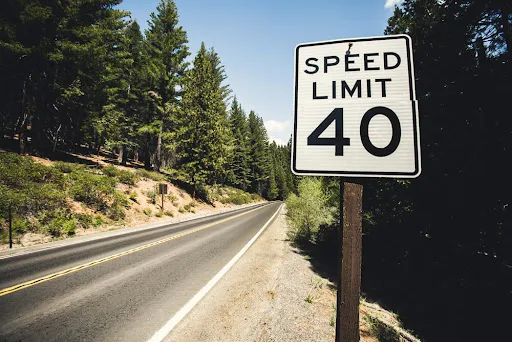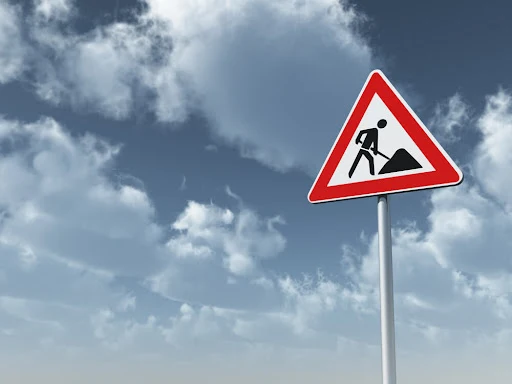Traffic signs are a fundamental part of road safety. They convey important information to drivers, cyclists, and pedestrians, helping ensure everyone follows the rules and navigates safely. In this blog, we'll explore some of the most common traffic signs and what they mean.
1. Stop Sign (Octagon)
Shape: Octagon
Color: Red with white letters
Meaning: The stop sign is one of the most recognizable road signs worldwide. When you see this sign, you must come to a complete stop at the intersection or crossing. After stopping, proceed only when it’s safe and the road is clear. This sign helps control traffic at intersections to prevent accidents.
Where You’ll See It: Intersections, pedestrian crossings, or places where a road enters a major street.
2. Yield Sign (Triangle)
Shape: Upside-down triangle
Color: Red border with a white interior
Meaning: A yield sign instructs drivers to slow down and prepare to stop if necessary. You must give way to any oncoming traffic or pedestrians but may proceed without stopping if it’s safe to do so. Yield signs are used at locations where full stops are not always required but slowing down is crucial.
Where You’ll See It: Merging lanes or when entering a roundabout.
3. Speed Limit Sign (Rectangle)
Shape: Vertical rectangle
Color: Black text on a white background
Meaning: This sign informs drivers of the maximum speed allowed on that stretch of road. Speed limits are enforced to maintain safe driving conditions for all road users, adjusting for road type, traffic volume, and area (urban, rural, or highway).
Where You’ll See It: Highways, city streets, and near schools or residential areas.
4. Pedestrian Crossing (Diamond or Rectangle)
Shape: Diamond or rectangle
Color: Yellow or fluorescent green with a black symbol
Meaning: This sign warns drivers of an upcoming pedestrian crossing. When approaching this sign, reduce speed and be prepared to stop if pedestrians are present. It prioritizes the safety of pedestrians, especially in areas with heavy foot traffic.
Where You’ll See It: Near schools, parks, or busy intersections.
5. Railroad Crossing (Crossbuck)
Shape: Crossbuck (X-shaped)
Color: White with black lettering
Meaning: This sign marks the location of a railroad crossing ahead. Drivers must slow down and prepare to stop when a train is approaching. Some railroad crossings may have additional signals, such as lights or barriers, to indicate when it is unsafe to cross.
Where You’ll See It: Anywhere a road intersects with train tracks.
6. Construction Zone (Diamond)
Shape: Diamond
Color: Orange with black symbols or letters
Meaning: Construction zone signs warn drivers of ongoing road work and potential hazards. They signal the need to slow down and exercise caution, as workers may be present, and lanes could be temporarily altered. Speed limits are often reduced in these areas.
Where You’ll See It: Road construction sites, highway repairs, or utility work areas.
7. Do Not Enter (Circle)
Shape: Red circle with a white rectangle in the center
Color: Red and white
Meaning: This sign is used to mark areas where drivers are not allowed to proceed, such as one-way streets or restricted zones. It’s crucial for preventing accidents or wrong-way driving.
Where You’ll See It: At the beginning of one-way streets, private roads, or restricted zones.
8. One-Way Sign (Rectangle)
Shape: Horizontal rectangle
Color: Black with white text or white with black arrow
Meaning: A one-way sign indicates that traffic is only allowed to travel in one direction on the road. Drivers must follow the direction of the arrow to avoid head-on collisions with opposing traffic.
Where You’ll See It: Downtown areas or places with narrow roads.
9. Merge Sign (Diamond)
Shape: Diamond
Color: Yellow with a black arrow
Meaning: This sign warns that two lanes of traffic are merging ahead. Drivers should be prepared to adjust their speed and allow cars to enter from the merging lane safely. It helps reduce confusion and ensures smooth transitions on the road.
Where You’ll See It: On highways, at freeway exits, or near lane reductions.
Understanding traffic signs is essential for staying safe on the road. Each sign serves a unique purpose, guiding drivers, cyclists, and pedestrians to navigate streets efficiently and avoid accidents. Whether you’re learning to drive or simply refreshing your knowledge, familiarizing yourself with these common traffic signs can improve your safety and confidence behind the wheel.
Safe driving!
.jpeg)








